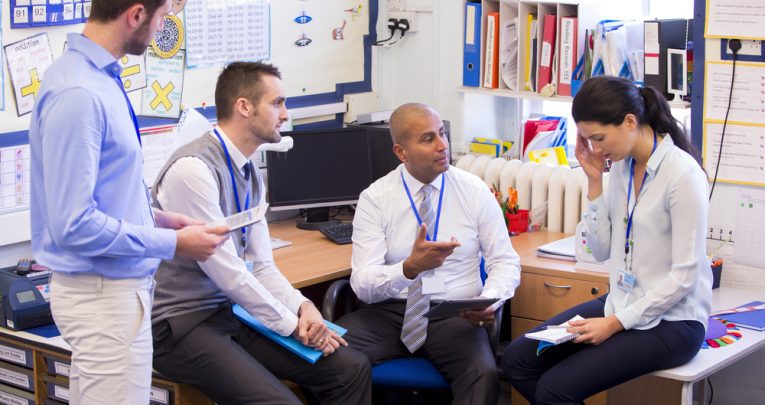The Case For Cutting Workload – If We Give Teachers What They Want, Everyone Benefits

It’s the burning question on every headteacher’s lips: what do teachers want? More time? More pay? That’s certainly part of it, but it’s not the whole picture. To date, much of the hype surrounding the draw of joining an academy school in particular, has been centred on better salaries and different holiday patterns. And while […]

- by Amanda Godfrey
- Former executive headteacher at the Spiral Partnership Trust

It’s the burning question on every headteacher’s lips: what do teachers want? More time? More pay?
That’s certainly part of it, but it’s not the whole picture. To date, much of the hype surrounding the draw of joining an academy school in particular, has been centred on better salaries and different holiday patterns. And while in some cases this might seem appealing, the real message should be about using the opportunity to change; to make a positive difference to children’s lives and to better-support teachers in their roles and responsibilities.
Workloads and expectations
The consistent demands and administrative burden placed upon teachers today is an ongoing and growing concern for most schools and academies. Working 50 to 60 hour weeks across evenings and weekends is certainly not uncommon, but increased workload has become something of a ‘norm’ in the teaching profession. That doesn’t mean it should go unchallenged or unrecognised – on the contrary, it is the duty of the school and the head to ensure that every teacher is adequately supported and that workload levels are managed appropriately.
Changes to the curriculum have also meant that it’s no longer possible for teachers to simply deliver the curriculum. They now need to design it too, along with the assessment framework, so you can see how a teacher’s workload can easily spiral.
As well as the greater numbers of children currently in mainstream education, there are numerous other factors that contribute to increased workloads for teachers. There are higher expectations on the part of parents that their children’s needs will met to a consistently high level; continual pressure on schools in terms of the diversity of issues they should be addressing and teaching; and growing numbers of vulnerable pupils needing social and pastoral care.
To that, you can add increasing demands for SEN provision, the complexities involved in meeting the particular needs of individual children and the frequent lack of funding available for this kind of provision. Pressures on other public sector services, such as the NHS and social services, have also meant that schools are now often expected to step in when certain forms of provision for families are no longer there.
What teachers want and need
Both maintained and academy schools struggle to meet the demands of the curriculum. Although academies and their teachers may at first appear to have more freedoms, the constraints imposed by narrow assessment measures in effect reduce their potential to respond to those freedoms. The issues that teachers in both environments face regarding increased workloads are all too similar.
Frankly, teachers want and need their workloads to be reduced so they can focus more time on teaching. If we are to stand any chance of reducing workloads for teachers across the board and improve how we teach day-to-day, headteachers need to find a way to give much more support to their teachers.
They need to be clear about their expectations and provide the resources and support they need to do the job to the best of their ability. Less experienced teachers in particular need much more support designing the curriculum and planning the sequence of learning, allowing them to focus their energies on the delivery of the lesson.
Increasing teacher productivity
Schools should be encouraging their teachers to think very carefully about what makes a difference to children’s learning. Some tasks can and should be taken on by support staff and don’t necessarily need a teacher’s input.
It’s possible to make some teaching resources a semi-permanent part of the learning environment – maps of the world, for example, or pictures from noted artists – so that the teacher won’t have to source them every time they’re needed. Sharing plans, resources, local knowledge and curriculum experience present important opportunities for teams to work together and reduce their collective workload. Passing some great resources and good ideas on to a teaching colleague can help to radically reduce their workload an enable them to use their time more effectively.
We are currently working to provide teachers with more support on long-term curriculum design, so that they can focus their energies on planning the delivery of lessons, rather than on designing and re-designing what needs to be taught and how to fit it in.
Another area that could have a huge impact on reducing workloads is revisiting marking, to focus on what really improves pupils’ learning, rather than feeling the need to leave an evidence trail for external scrutiny.
Opportunity, progression and challenge
Yes, teachers are looking for fair pay and flexible holidays – which are important in any profession – but they aren’t the reason people choose to become teachers. They want to make a difference to children’s lives. They want a vocation, not just a job. They want autonomy, and they want to be able to buy into the ethos of a school. But there is even more to it than that.
Today’s teachers need reduced workloads to do a good job and sustain it over time, while also being able to pursue opportunities for continual professional development. They want to take part in exciting innovations that will keep them motivated and enthused. Being given the chance to take the lead, develop their leadership skills, and change schools to move into new positions if they so wish is important for career progression.
It’s down to schools to provide those opportunities and the right support for teachers. It’s also the job of schools to provide their teachers with new challenges – the sort that will help to revitalise the teachers’ love of teaching.
Schools need to adapt and flex to an ever-changing environment if they are to understand and recognise what teachers want, but that change needs to more about evolution, rather than sudden, impulsive activity.
Whether that means extended school days, organising summer schools, creating new roles within the teaching profession to reduce the administrative burden, or altering the current staffing structure so it provides a greater range of opportunities, we need to be determined to improve the school environment for teachers.
Amanda Godfrey is a National Leader of Education and executive head of Spiral Academies Trust; for more information, visit www.spiral.herts.sch.uk or follow @spiralexechead










